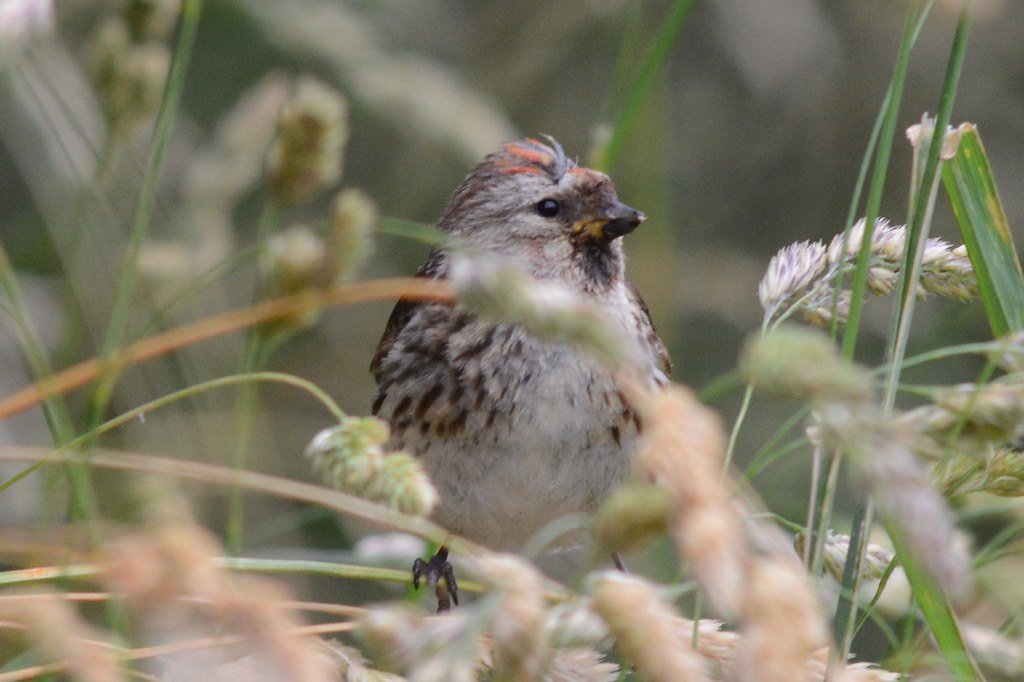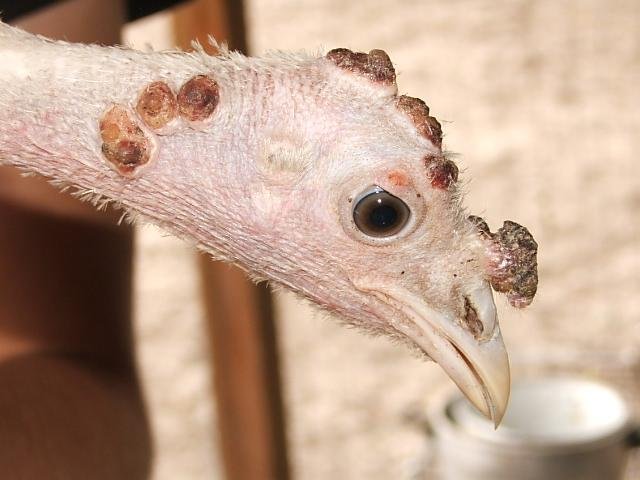Avian Pox

What Is Avian Pox?
Avian pox is a slow-moving, mild to severe disease of birds caused by the avipoxvirus, of which three strains have been identified. Fowlpox virus, pigeon pox virus, and canarypox virus are the three strains. The virulence of the strains varies, and they can infect other avian species. However, many of the strains belong to distinct groups. Avian pox has been found in about sixty species of birds belonging to 20 families. The fowlpox virus is the strain seen in wild turkeys.
Avian pox lesions (wart-like growths) affect the bird’s unfeathered parts of the body, as well as the mouth, larynx, and/or trachea in some cases. 1Go To Source michigan.gov -“Avian Pox”
Learn More: Animal Disease Spreadable To Humans
Which Species Is Susceptible To Avian Pox?
Avian pox is thought to affect the majority of bird species. This disease has been reported in about 230 species of wild and domestic birds; turkeys, doves, and finches are the most commonly affected wild bird species in the United States.
Avian pox can cause death in upland game birds (such as mourning doves and wild turkeys), songbirds, and raptors in varying degrees. Infection rates in wild waterfowl in North America have recently increased, though infections in these birds are still relatively uncommon. This virus can infect domestic birds, but wild birds are not thought to be a major infection source for domestic birds. Avian poxviruses have never infected humans. 2Go To Source northeastwildlife.org -“Avian Pox”
How Is Avian Pox Spread?

Biting insects such as fleas, mosquitoes, mites, midges, and flies are the most common vectors of avian pox transmission. When these mosquitos take a blood meal from an infected bird, they pick up virus particles and then transmit the virus to another susceptible bird. When biting insects are plentiful, transmission rates are highest.
Direct contact with infected birds or contact with contaminated objects such as bird feeders can also spread the virus. The avian poxvirus is highly resistant to drying and can remain infectious in dried scabs and on contaminated surfaces for months to years. Although rare, virus particles can become aerosolized and infect susceptible birds through inhalation.
Ingesting contaminated food or water can cause infection in birds. Abrasions on the skin can also allow the virus to enter the body. Bird population density impacts transmission rates, with higher infection rates occurring when bird densities are highest. 3Go To Source vet.upenn.edu -“Avian Pox”
Is Avian Pox Spreadable To People Or Pets?
The avian pox virus does not appear to be capable of infecting humans. People can spread the disease by coming into contact with infected birds. Avian pox can infest clothing, and humans may spread the disease to other birds through direct contact.
Although avian pox cannot be transmitted to humans, dogs, or cats, it can cause significant mortality in certain bird populations, such as chicken flocks. Those with chicken coops should fortify the coop to ensure wild birds don’t come into contact with the poultry.
What Are The Visual Signs Of Avian Pox?

Clinical signs vary depending on the host species, the virus strain’s virulence, lesions’ location, and other complicating factors. In poultry, the disease usually develops gradually and goes undetected until skin lesions appear. Lesions affect only a few birds at a time. Signs of the disease in chickens and turkeys can differ due to two overlapping forms of the disease:
Cutaneous (dry pox) is the most common form seen in most outbreaks. A pimple or scab appears on the skin’s nonfeathered areas, such as the comb, wattles, eyelids, feet, and legs, in the dry form. The infection may eventually spread to other feathered areas of the body (especially in turkeys). Infected birds frequently have difficulty eating, have reduced feed intake, and lose weight. Other symptoms include decreased egg production, swelling of the face, blindness (due to ocular and periocular involvement), and a loss of vigor. In uncomplicated cases, mortality is usually low unless secondary infections become a problem.
The wet-mucous form causes diphtheritic, yellow canker lesions on the oral mucous membranes, tongue, esophagus, and trachea. Lesions can cause inappetence and dyspnea in the upper digestive and respiratory tracts, respectively. Other respiratory symptoms, ranging from mild to severe, may also appear. Lesions cause oculonasal discharges in the eye and nasal cavity. Suffocation or starvation are common causes of death.
In turkeys, avian pox is usually associated with a more chronic condition than in chickens. The canarypox infection is a systemic infection with a high mortality rate. 4Go To Sources partnersah.vet.cornell.edu -“Avian Pox”
Is Avian Pox Harmful?
While most avian pox cases in wild birds are mild and self-limiting, some outbreaks result in high mortality rates. Birds that live on remote islands are especially vulnerable to the disease. Avian pox has had a negative impact on many native bird species in Hawaii. When many captive birds are kept in close quarters, avian pox can cause significant losses. It is also possible for the virus to spread between wild and captive birds.
How To Prevent Livestock From Getting Avian Pox?
Because there is no effective treatment for avian pox, it is best to prevent the disease through vaccination. There are a variety of pox vaccines available for use in both backyard and commercial flocks. In chickens and pigeons, the wing-stick method of vaccination with a two-needle applicator is commonly used. Thigh-stick vaccination is most commonly used in turkeys, but it can also be used in pigeons. If necessary, birds can be vaccinated for pox at any age; however, the vaccine’s age and route of administration recommendations should be followed.
What To Do If Your Livestock Have Avian Pox?
Because there is no effective treatment for avian pox, it is best to prevent the disease through vaccination. There are a variety of pox vaccines available for use in both backyard and commercial flocks. Contact a wildlife removal & exclusion company for advice on best practices to protect your flock.
Sources:
- “DNR – Avian Pox.” Michigan Department of Natural Resources, STATE OF MICHIGAN, www.michigan.gov/dnr/0,4570,7-350-79136_79608_85016-26362–,00.html. Accessed 22 Mar. 2021.
- “Avian Pox | Northeast WildlifeDisease Cooperative.” Northeast Wildlife Disease Cooperative, Northeast Wildlife Disease Cooperative, www.northeastwildlife.org/disease/avian-pox#:%7E:text=Species%20Affected,bird%20species%20in%20New%20England. Accessed 22 Mar. 2021.
- Wildlife Futures Team. “Penn Vet | Fact Sheet Detail.” PennVet, University of Pennsylvania, 7 Feb. 2021, www.vet.upenn.edu/research/centers-laboratories/research-initiatives/wildlife-futures-program/resources/fact-sheets/fact-sheet-detail/avian-pox.
- Chin, Richard, and Jamie Ruiz. “Avian Pox | Partners in Animal Health.” Cornell University College Of Veterinary Medicine, Cornell University College of Veterinary Medicine, 17 Sept. 2008, partnersah.vet.cornell.edu/content/avian-pox.
